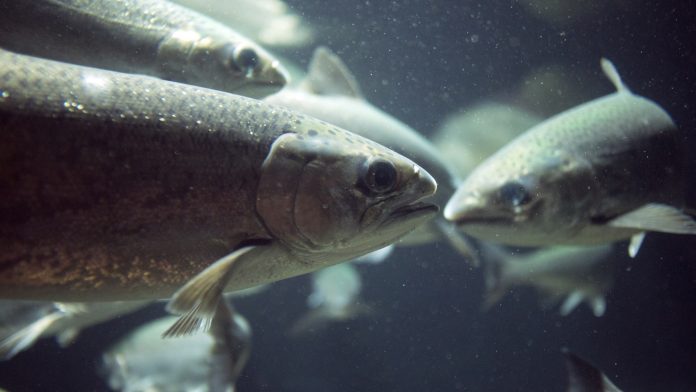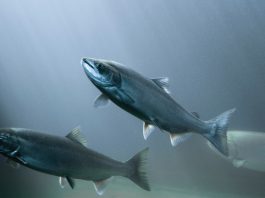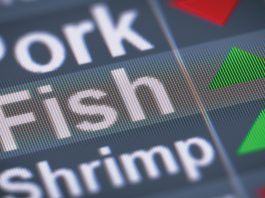Blue Unit’s Lab Station gives fish farmers sufficient data to act against unstable levels of hydrogen sulfide (H2S), ensuring fish health and productivity.
On many fish farms, several water quality parameters (including toxic free CO2) are only measured manually at fixed times or in selected tanks. The water quality is fluctuating daily and are often following rhythmic patterns. With this method, you will often miss the peaks and therefore create a misleading result of a satisfying, stable CO2 level.
Fig. 1 presents actual data from a fish farm measured with Blue Unit’s Lab Station. Here, the CO2 concentrations are measured six times a day in each tank and provides a realistic and reliable picture of the current water quality. Whereas Fig. 2 presents the same data, but only with daily measurements (marked as red crosses on Fig. 1). This simulates an example of a fish farm performing manual measurements every morning.
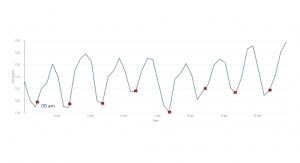
At first glance, Fig. 2 seems to represent a tank with a stable water quality and a reasonable CO2 level. However, the measurements are only done once every morning, when the CO2 concentrations are low, and thereby creating a misleading picture. Oppositely, Fig.3 displays fluctuations with daily peaks and shows how the CO2 concentrations often exceeds preferable levels. This instability is not captured by the manual measurements. Additionally, the automatic measurements save the effort of having to manually note down and keep track of the values. CO2 levels are typically increasing during the day due to high production, and thereby inhibiting the growth. But without enough data, the farm manager will not be able to identify and solve the problem, which can lead to too low pH and uncontrolled levels of free CO2.
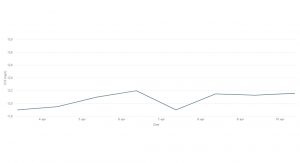
The importance of frequent measurements
This comparison reveals why it is important to measure and monitor the water quality closely during the day. High and fluctuating CO2 levels reduces the fish’s growth and conversion rate.1 However, these patterns are hard to identify with few, manual measurements, and this will cause decisions to be made based on inadequate information. The Lab Station identifies the problem and can, together with Blue Unit’s services, work towards a solution. In a situation like this, it would probably be beneficial to steal a bit of flow from another more stable tank and direct it into this specific tank.
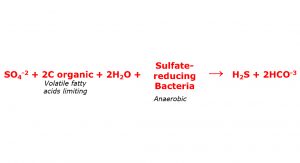
Elevated levels of hydrogen sulfide (H2S) can have lethal effects on fish. The presence of oxygen will work against the production of H2S, but it is a very slow process that cannot protect the fish in situations with sudden hydrogen sulfide spikes. Anaerobic environments with H2S can form anywhere on a fish farm, particularly in biofilters and stagnant piping systems.
The concentration of sulfate (SO42-) is significantly higher in seawater (2700 mg/L) compared to freshwater (5-50 mg/L). However, a fish farm needs to operate below 5ppt in salinity before SO42- becomes limiting for H2S- formation. Sulfate reducing bacteria competes with nitrate reducing bacteria for volatile fatty acids. As a result, if the fish farm operates at a higher nitrate level, then nitrate reducing bacteria can outcompete the sulfate reducing bacteria for limiting volatile fatty acids.
How does it kill? Are there any symptoms?
Fish are very sensitive to H2S. Levels of even 2µg/L in freshwater and 5µg/L in salt water can cause stress, and concentrations above 25µg/L can be lethal.
The symptoms of a H2S- uptake are reduced appetite, together with the fish beginning to swim sideways. Uptake cannot be detected on gills or other organs, but special sample bottles can be obtained for accurate H2S- testing within three days.
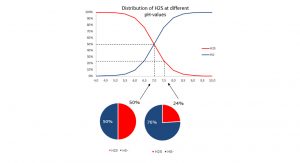
How does Blue Unit manage H2S?
The effects of H2S are most dangerous at low pH-values. Conversely, it becomes less dangerous at higher pH values, where it exists at HS-. H2S-gas binds into the water to form HS-. At pH 7.5, around 75% is bound, while only 50% is bound at pH 7.0.
Luckily, there is a constant removal of H2S and HS- across fish farms. HS- binds with metals to form metal sulfides, H2S can be degassed, while ozone, oxygen, and nitrate all oxidise H2S to less toxic forms.
For fish farms, it should be the goal not to have any H2S accumulating at all. Blue Unit’s Lab Station measures total hydrogen sulfide six times a day across 12 locations on a RAS, creating up to 72 data points daily. Blue Unit helps farms to minimise their pH drop across fish tanks, binding more H2S to HS-. Additionally, Blue Unit helps customers manage turbidity levels. This minimises the creation of anaerobic zones and helps to maintain healthy, well oxygenated biofilters.
References
- Khan, J.R., Johansen, P., and Skov, V. 2018. The effects of acute and long-term exposure to CO2 on the respiratory physiology and production performance of Atlantic salmon (Salmo salar) in freshwater, Aquaculture
Henrik Hamann Juel
CEO
Blue Unit A/S
+45 5115 8102
hhj@blue-unit.com
www.blue-unit.com
Please note, this article will also appear in the second edition of our new quarterly publication.

